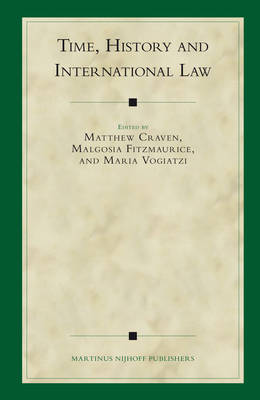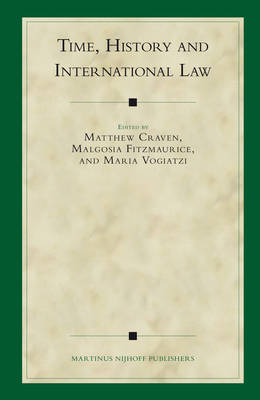
- Afhalen na 1 uur in een winkel met voorraad
- Gratis thuislevering in België vanaf € 30
- Ruim aanbod met 7 miljoen producten
- Afhalen na 1 uur in een winkel met voorraad
- Gratis thuislevering in België vanaf € 30
- Ruim aanbod met 7 miljoen producten
Zoeken
Omschrijving
This book examines theoretical and practical issues concerning the relationship between international law, time and history. Problems relating to time and history are ever-present in the work of international lawyers, whether understood in terms of the role of historic practice in the doctrine of sources, the application of the principle of inter-temporal law in dispute settlement, or in gaining a coherent insight into the role that was played by international law in past events. But very little has been written about the various different ways in which international lawyers approach or understand the past, and it is with a view to exploring the dynamics of that engagement that this book has been compiled.
In its broadest sense, it is possible to identify at least three different ways in which the relationship between international law and (its) history may be conceived. The first is that of a history of international law written in narrative form, and mapped out in terms of a teleology of origins, development, progress or renewal. The second is that of history in international law and of the role history plays in arguments about law itself (for example in the construction of customary international law). The third way of understanding that relationship is in terms of international law in history: of understanding how international law has been engaged in the creation of a history that in some senses stands outside the history of international law itself.
The essays in this collection make clear that each type of engagement with history and international law interweaves various different types of historical narrative, pointing to the typically multi-layered nature of international lawyers' engagement with the past and its importance in shaping the present and future of international law.
Originally published in hardcover
In its broadest sense, it is possible to identify at least three different ways in which the relationship between international law and (its) history may be conceived. The first is that of a history of international law written in narrative form, and mapped out in terms of a teleology of origins, development, progress or renewal. The second is that of history in international law and of the role history plays in arguments about law itself (for example in the construction of customary international law). The third way of understanding that relationship is in terms of international law in history: of understanding how international law has been engaged in the creation of a history that in some senses stands outside the history of international law itself.
The essays in this collection make clear that each type of engagement with history and international law interweaves various different types of historical narrative, pointing to the typically multi-layered nature of international lawyers' engagement with the past and its importance in shaping the present and future of international law.
Originally published in hardcover
Specificaties
Betrokkenen
- Uitgeverij:
Inhoud
- Aantal bladzijden:
- 256
- Taal:
- Engels
- Reeks:
Eigenschappen
- Productcode (EAN):
- 9789004154810
- Verschijningsdatum:
- 13/12/2006
- Uitvoering:
- Hardcover
- Formaat:
- Genaaid
- Afmetingen:
- 164 mm x 247 mm
- Gewicht:
- 616 g

Alleen bij Standaard Boekhandel
+ 549 punten op je klantenkaart van Standaard Boekhandel
Beoordelingen
We publiceren alleen reviews die voldoen aan de voorwaarden voor reviews. Bekijk onze voorwaarden voor reviews.







